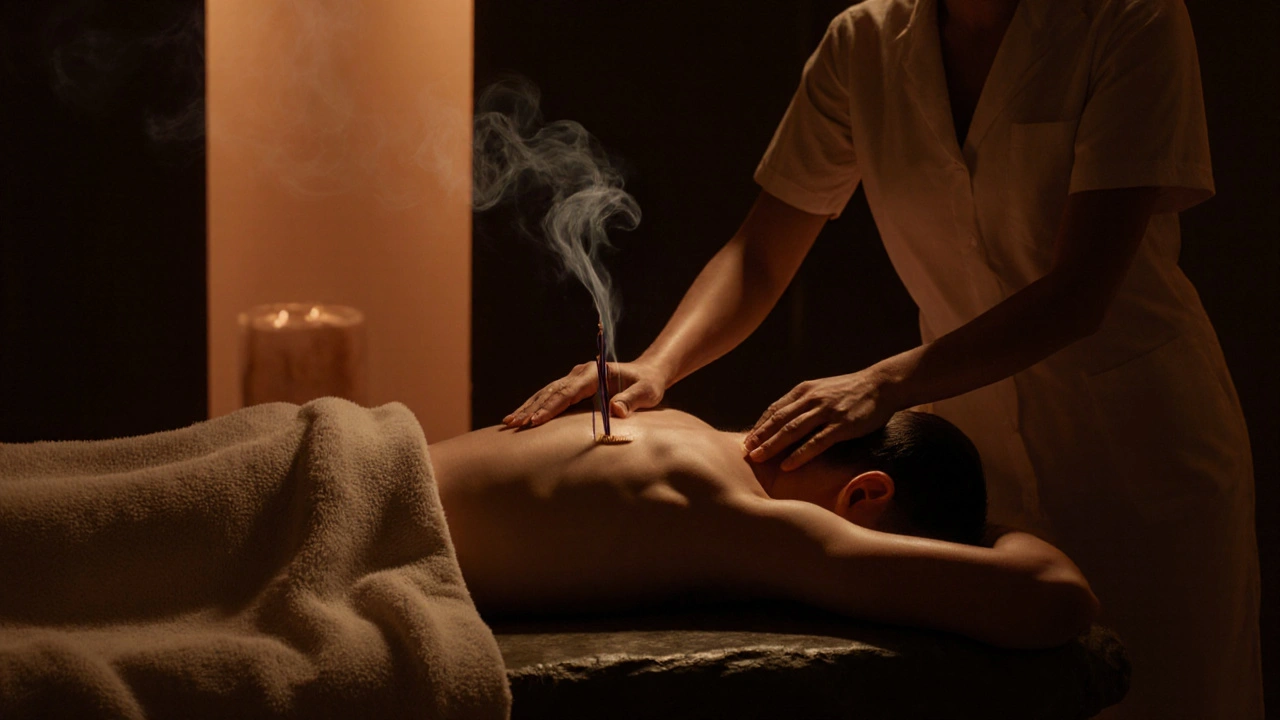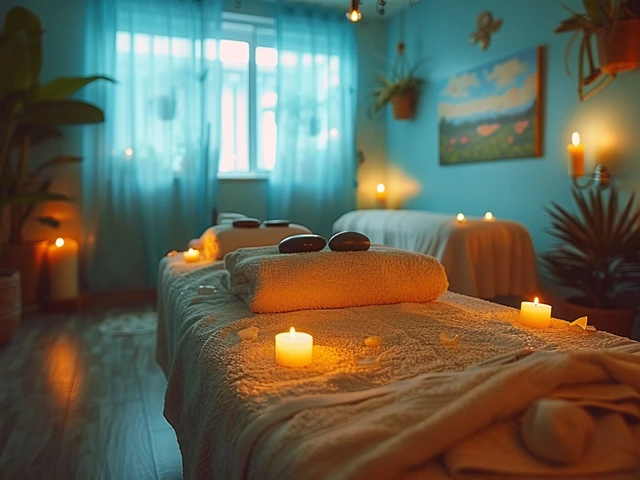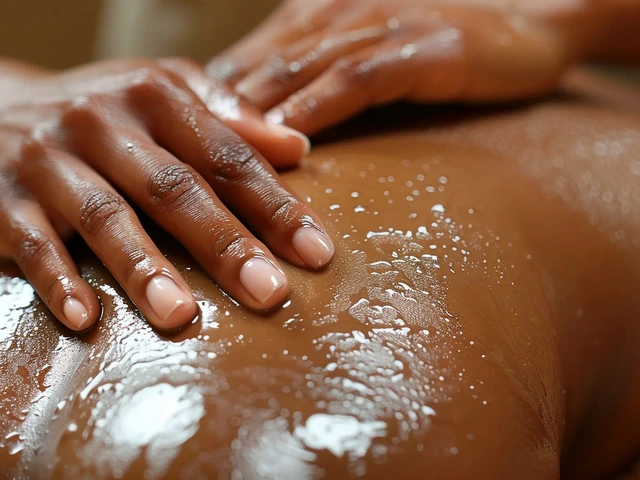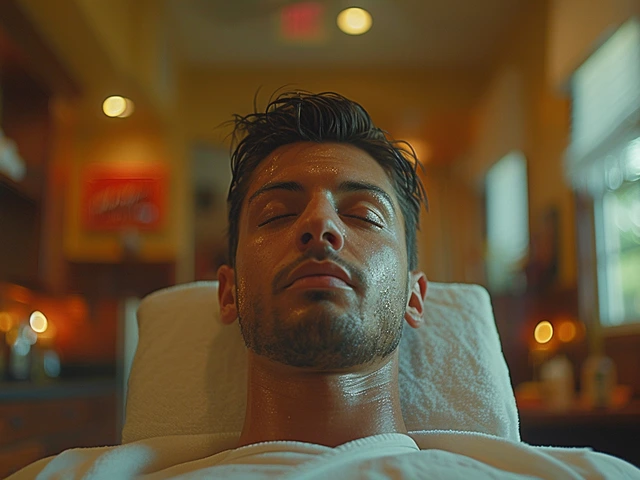Performance anxiety isn’t just about failing a test or stumbling in front of a crowd. For many men, it shows up in bed - the fear of not getting hard, not lasting long, or disappointing a partner. It’s not weakness. It’s biology meeting stress. And when your nervous system is stuck in fight-or-flight mode, your body doesn’t care about desire. It cares about survival. That’s where tantric massage comes in - not as a quick fix, but as a quiet revolution in how you reconnect with your body.
What tantric massage really is (and what it isn’t)
Tantric massage isn’t erotic massage. It’s not about sex. It’s not about orgasm. It’s about presence. A tantric session is slow. It’s deliberate. It uses gentle, full-body touch to help you drop out of your head and back into your skin. The therapist doesn’t rush. The lights are low. The music is soft. There’s no pressure to perform. Instead, you’re invited to simply feel. This approach comes from ancient tantric traditions, but today it’s been stripped of mysticism and refined into a science-backed wellness tool. Studies show that slow, intentional touch activates the parasympathetic nervous system - the part of your body that says, “It’s safe to relax.” When that happens, your heart rate slows, your muscles unwind, and your brain starts releasing serotonin and endorphins. Cortisol - the main stress hormone - drops. This isn’t magic. It’s neurobiology.Why performance anxiety happens - and why most solutions fail
Performance anxiety in sex usually starts with one thought: “What if I can’t do it?” That thought triggers a stress response. Adrenaline surges. Blood flow shifts away from your genitals and toward your muscles. Your mind races. Your body tenses. And suddenly, even if you want it, you can’t get hard. Or you ejaculate too fast. Then you worry about it happening again. It becomes a loop. Talk therapy helps reframe thoughts. Medications like SSRIs or PDE5 inhibitors can boost function. But neither touches the root: your body’s learned fear. You can tell yourself, “It’s okay,” but if your nervous system still screams “danger,” your body won’t listen. Tantric massage works differently. It doesn’t fight the fear. It dissolves it - slowly, through touch.How tantric massage rewires your nervous system
A typical tantric massage lasts 60 to 90 minutes. The therapist uses long, flowing strokes across your back, legs, arms, chest - even areas you might think are off-limits. The key isn’t where they touch, but how. Each movement is slow, steady, and non-goal-oriented. There’s no expectation of erection. No pressure to climax. Just presence. This kind of touch sends a signal to your brain: “You’re safe.” Over time, your nervous system starts to believe it. Research shows that after just eight weeks of regular mindfulness practices - including breathwork and body awareness, both central to tantric massage - measurable changes occur in brain regions linked to emotional regulation. Your amygdala, the fear center, becomes less reactive. Your prefrontal cortex, the part that makes rational choices, gets stronger. One client, a 42-year-old engineer from Prague, reported that after six sessions, he stopped checking his phone during sex to time himself. “I didn’t even realize I was doing it until I stopped,” he said. “I just… felt.” That’s the shift. Not better performance. Better presence.What you can expect during your first session
Before the massage begins, you’ll have a clear conversation about boundaries. This isn’t optional - it’s essential. You’ll discuss what areas are okay to touch, what kind of pressure feels good, and what’s off-limits. No surprises. No ambiguity. This safety net lets your body relax. The room is warm. The air smells like lavender or sandalwood. You lie on a heated table, covered with soft towels. The therapist begins with light strokes on your back, then moves to your arms, feet, and torso. Every movement is synchronized with your breath. You’re asked to breathe deeply - not to control it, but to notice it. Some people cry. Others laugh. Some fall asleep. All of it’s normal. The body holds stress in places we don’t even name - the jaw, the gut, the pelvis. Tantric massage doesn’t force release. It invites it.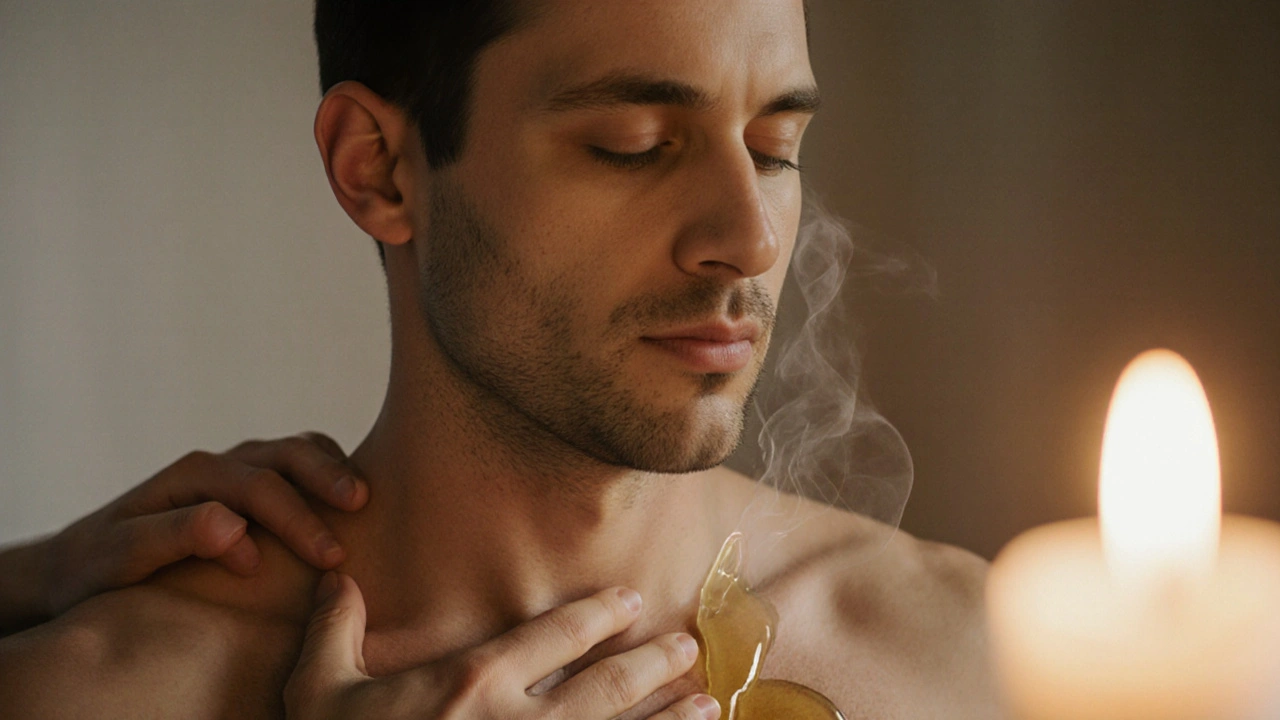
How it compares to other methods
Cognitive behavioral therapy (CBT) helps you change thoughts. Medication helps your chemistry. Meditation helps you observe your mind. Tantric massage does all three - but through the body. Traditional massage focuses on sore muscles. Tantric massage focuses on stuck emotions. It doesn’t just loosen your shoulders - it helps you feel the fear you’ve been holding there for years. That’s why it’s especially effective for sexual performance anxiety. You’re not just learning to relax. You’re learning to trust your body again. Unlike solo meditation, tantric massage includes another person - not to fix you, but to mirror safety. A skilled therapist doesn’t give advice. They hold space. They don’t touch your genitals unless you’ve explicitly agreed. And even then, it’s not about stimulation. It’s about awareness.Real results: What clients actually report
In Prague, where tantric massage has grown rapidly since 2023, clients consistently report three things:- Deeper sleep - not just more hours, but better quality. You wake up feeling rested, not drained.
- Less constant mental chatter. The background noise of “What if I fail?” fades.
- Improved sexual confidence - not because they last longer, but because they stop obsessing over length.
How to get the most out of it
Tantric massage isn’t a one-time fix. Like yoga or therapy, its power builds over time. Most people need 6 to 8 sessions, spaced about a week apart, to see lasting change. Between sessions, you can deepen the effect with simple practices:- Five minutes of slow belly breathing each morning - inhale for 4 counts, hold for 2, exhale for 6.
- Body scanning before bed: lie down and mentally move from your toes to your head, noticing sensations without judgment.
- Touch yourself gently - not to arouse, but to reconnect. Use oil. Notice texture, warmth, weight.
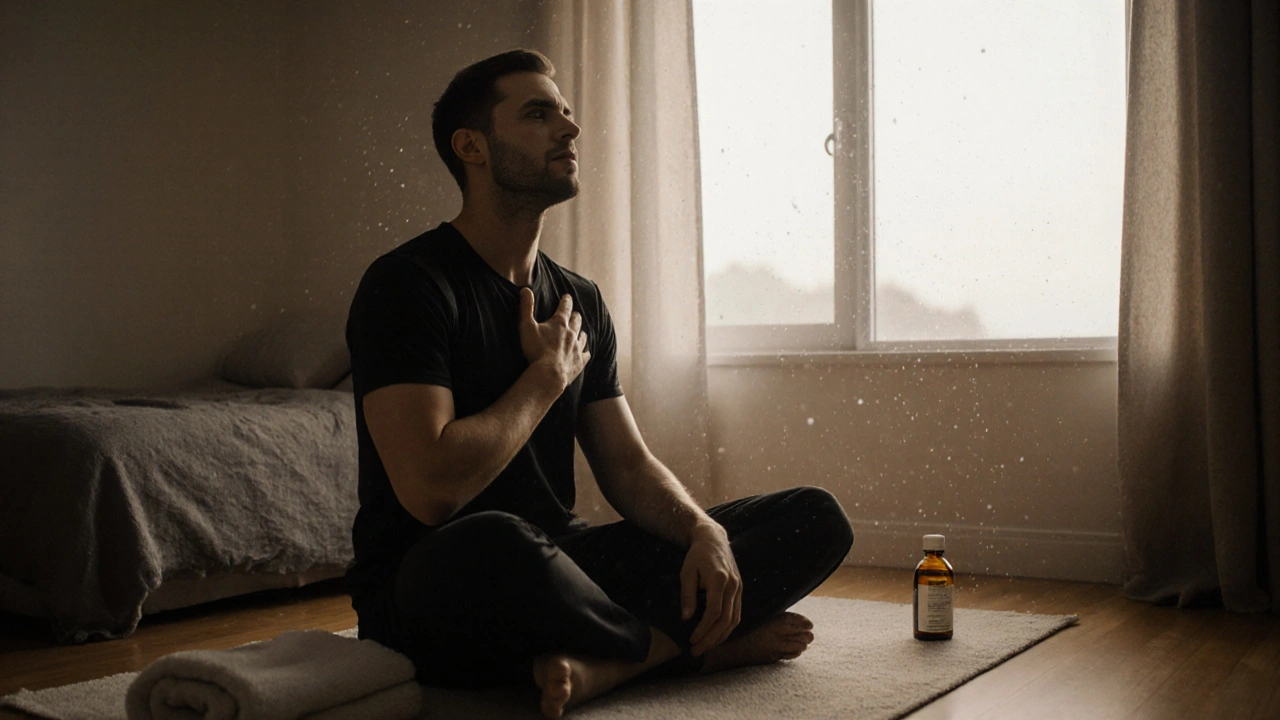
What to look for in a therapist
Not all “tantric” practitioners are the same. In Prague, prices range from 1,800 to 4,000 CZK per session. Higher prices often mean certified therapists with training in somatic therapy, trauma-informed care, or mindfulness-based practices. Ask these questions before booking:- What’s your training background?
- Do you work with clients who have performance anxiety?
- How do you handle boundaries?
- Can I speak with you before the session?
When it’s not enough
Tantric massage is powerful, but it’s not a substitute for medical care. If you have persistent erectile dysfunction, chronic pain, or severe anxiety disorders, see a doctor or therapist. Tantric massage works best as a complement - not a replacement. It’s also not for everyone. If you’ve experienced trauma, especially sexual trauma, you may need a trauma-informed therapist before trying this. Don’t push yourself. Safety comes first.The quiet transformation
Performance anxiety thrives in isolation. It grows in silence. Tantric massage breaks that silence - not with words, but with touch. It reminds you that your body is not your enemy. It’s your ally. It’s not broken. It’s just scared. You don’t need to be perfect. You don’t need to last longer. You just need to feel safe enough to be yourself - in bed, and out of it.After eight weeks of regular sessions, many clients say the same thing: “I didn’t know I was holding my breath until I stopped.”

